

Visit the Pusch House Museum to see the display where science, history, and curiosity collide!
The Oro Valley Historical Society is proud to feature the remarkable meteorite collection of Jim Kriegh – a local legend, civil engineer and a retired University of Arizona professor, whose passion for discovery led to finding one of the largest meteorite strewn fields in the world. It is the Gold Basin strewn field located in northwest Arizona.
On display at the Pusch House Museum is one of the meteorites he unearthed at Gold Basin, along with a curated collection that tells the fascinating story of space rocks that found their way to Earth.
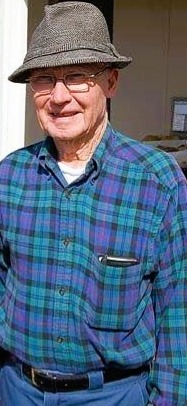
Jim Kriegh 1928 – 2007
Meteorites are pieces of other bodies in our solar system that make it to the ground when a meteor or “shooting star” flashes through our atmosphere at speeds of 15 to 70 kilometers per second (roughly 32,000 to 150,000 miles per hour). The majority originate from asteroids shattered by impacts with other asteroids. In a few cases they come from the moon and the planet, Mars. Meteorites that are found after a meteoric event has been witnessed are called a “fall”, while those found by chance are called a “find”.
Meteorites are usually named after a town or a large geographic landmark closest to the fall or the find.

Bashaw’s Gold Basin Sign
In 1995, while looking for gold through metal detecting, Jim Kriegh discovered a huge meteorite field in Gold Basin, Arizona (Mohave County), perhaps the second largest meteorite field in the world!
Jim took fragment samples to the University of Arizona’s Lunar and Planetary Laboratory. Dr. David Kring identified them as L4 chondritic meteorites. Later studies showed the fragments to be classified as L4-5-6. David asked if Jim would volunteer to map the area in secret so that the field would remain undisturbed by other hunters. This Gold Basin project remained secret for two years!

Twink Monrad and Jim Kriegh Examining Meteorites.
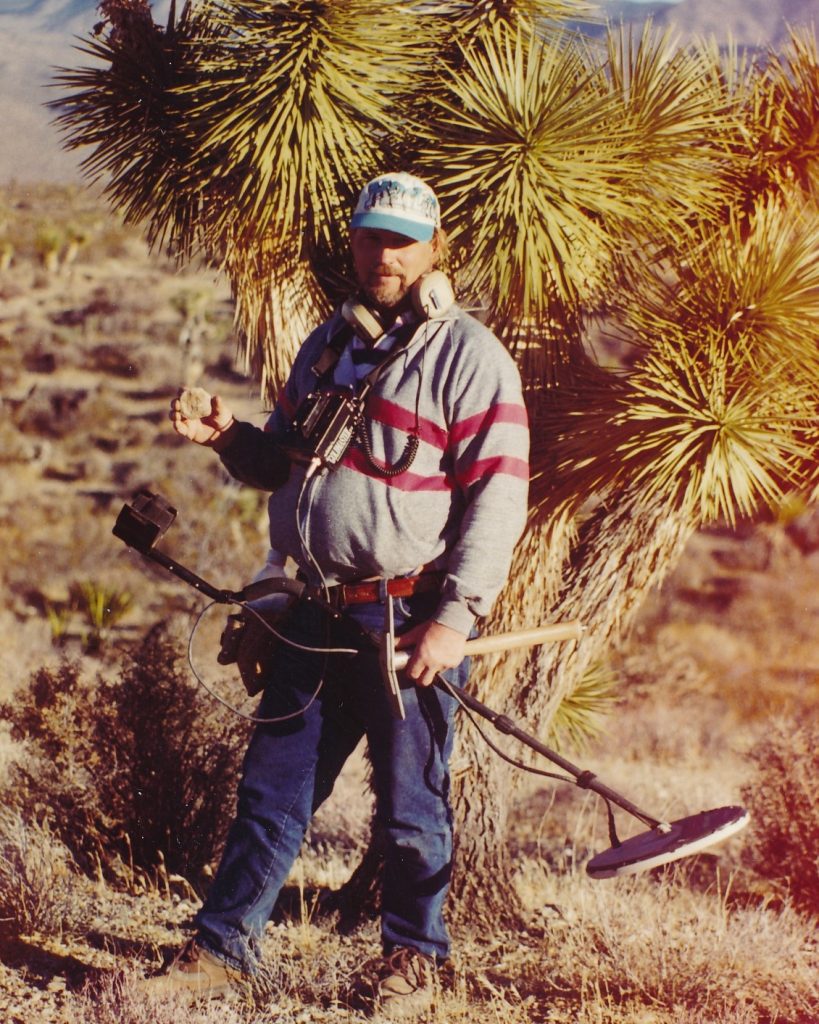
John Blennert, Ready to Dig with his Detector, Pick with Magnet Attached, and his Leather Pouch.
In field studies of the Gold Basin area, a team including Jim Kriegh, John Blennert and Twink Monrad recovered more than 2,000 meteorites, and they weighed, photographed, and labeled each one! These meteorites fell to the earth as long as 15,000 years ago and are 4.5 billion years in age.
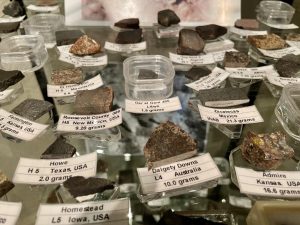
A Sample of Jim Kriegh’s Meteorites Displayed at the Pusch House Museum
Some of the meteorites went to the Smithsonian, others were kept by the University of Arizona to study, and the majority were returned to the team of three.
Jim’s discovery was announced in 1998 at the Tucson Gem and Mineral Show. Jim became a celebrity as everyone (authors, dealers, scientists, collectors, and rock hunters) wanted to meet him and trade for Gold Basin meteorites. Jim did trade some of his meteorites for ones from around the world and accumulated a large collection. He set aside some of his collection and donated it to the Oro Valley Historical Society.
There are numerous shows happening throughout Tucson. Find more information at these sites:
Tucson Gem, Mineral & Fossil Showcase (city-wide) – January 24 – February 15, 2026
The Tucson Gem and Mineral Society hosts their 71st Annual show February 12 – 15, 2026, with the theme, Red, White & Blue – Celebrate the Spirit of Minerals!
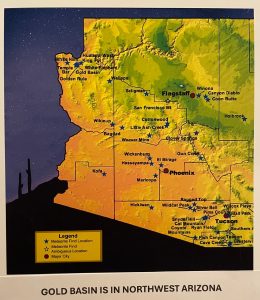
Gold Basin Map of Northwest Arizona
 This Exhibit Made Possible by the Bequest of Jim Kriegh
This Exhibit Made Possible by the Bequest of Jim KrieghFounder of the Town of Oro Valley and Co-founder of the Oro Valley Historical Society (1928 – 2007)
Oro Valley Historical Society is thankful for Jim’s generous donation on display in the museum.
Learn More About the Gold Basin Meteorite Discovery
Don’t miss the Extraterrestrial Hunter article on ILoveOV.com, written by Tom Ekman, J.D., M.Ed. It features Oro Valley’s own Twink Monrad, a lifetime member of the Oro Valley Historical Society. Twink shares her passion for meteorites – what they are, how to find them, and why she calls them “Space Rocks”.
Also read the LOVE: Let Oro Valley Excel feature James (Jim) D. Kriegh – Oro Valley Founding Father and Much More, which highlights his incredible legacy.
An Interview with Jim Kriegh – A Meteorite Legacy
Paul Harris of Meteorite Times Magazine honored Jim Kriegh by publishing their October 2006 interview, capturing Jim’s passion for meteorite hunting and the story behind his remarkable collection. Discover how it all began – from a curious mind to a historic strewn field. Read the full interview here.
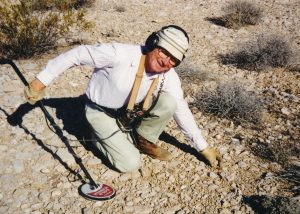
Jim Kriegh Doing What He Loved! Photo taken by O. Richard Norton
Photo Credit: This photo was taken by O. Richard Norton, a close friend of Jim’s and former director of the Flandreau Planetarium at the University of Arizona. O. Richard Norton also wrote Rocks from Space which can be ordered through Amazon.
Click to view The Many Faces of Gold Basin Poster designed by Maria Schuchardt and written by Dolores Hill (Lunar and Planetary Laboratory University of Arizona).
Below are select photos from the Gold Basin meteorite recovery project, conducted between January 1996 and January 1998. Check out additional images and video footage from this incredible project on YouTube!
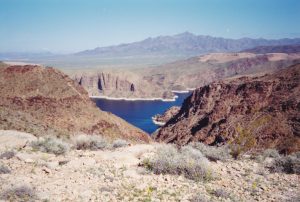
Beautiful Blue Office View at Gold Basin!
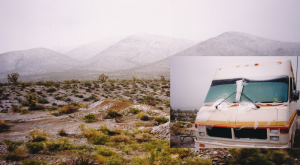
A Little Snow Wouldn’t Slow this Team Down!
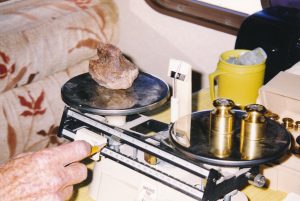
All in a Day’s Work – Weighing a Meteorite.
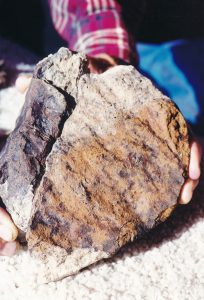
Large Meteorite at Gold Basin
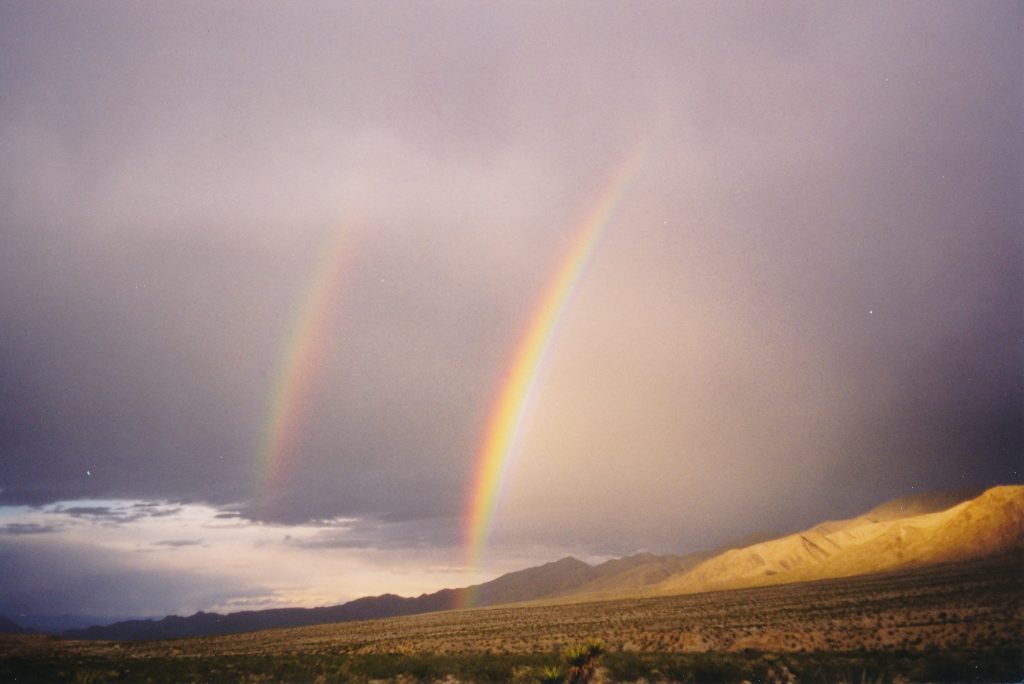
The Team Followed a Double-Rainbow and Found Gold…Gold Basin, that is!